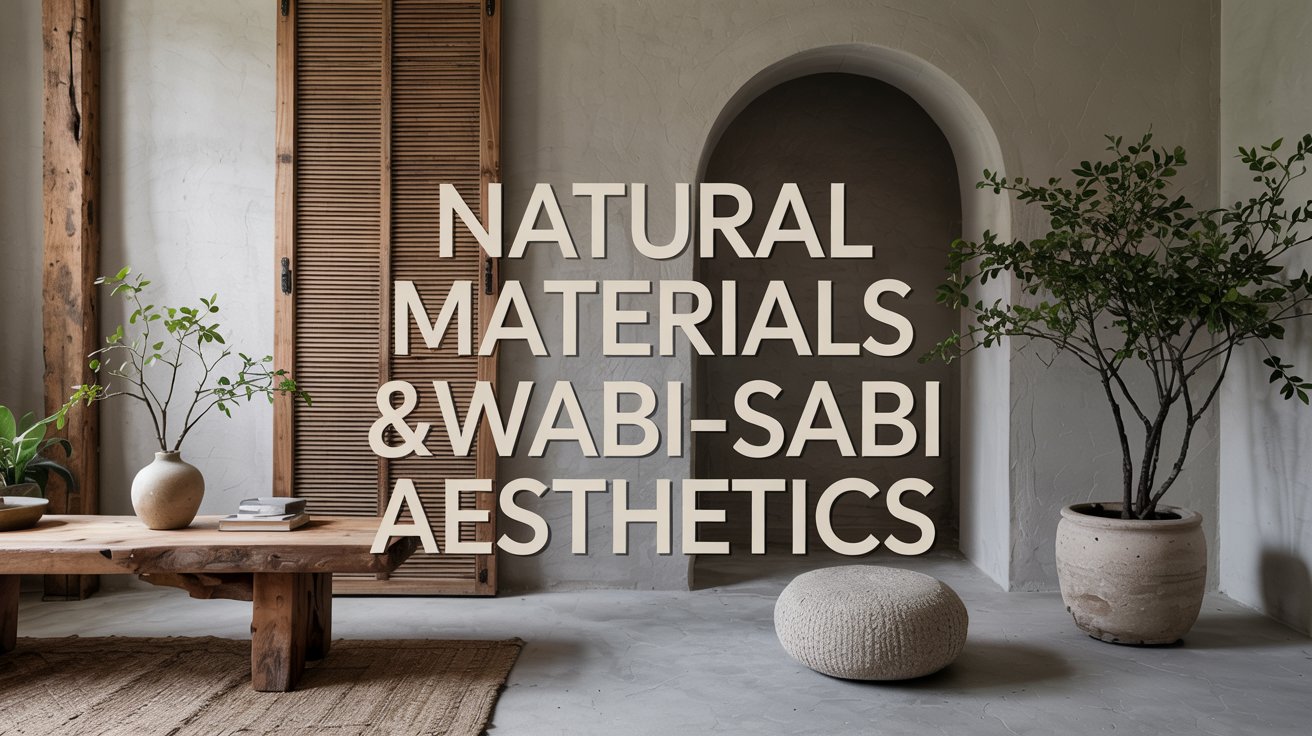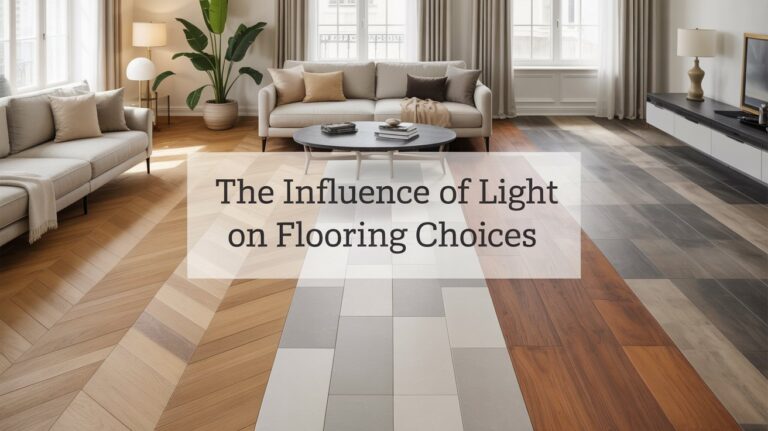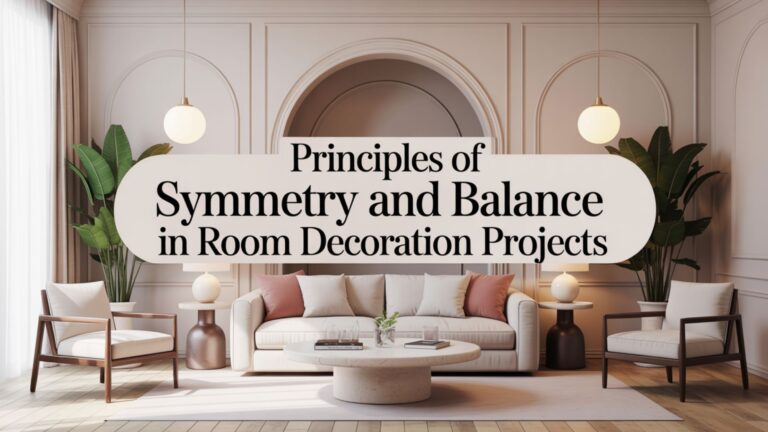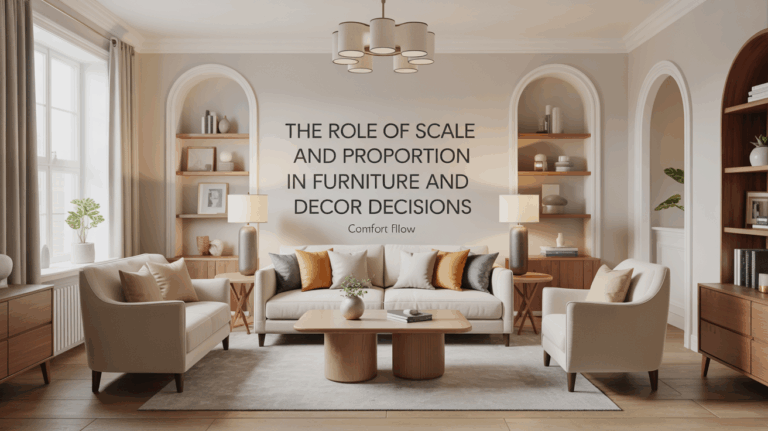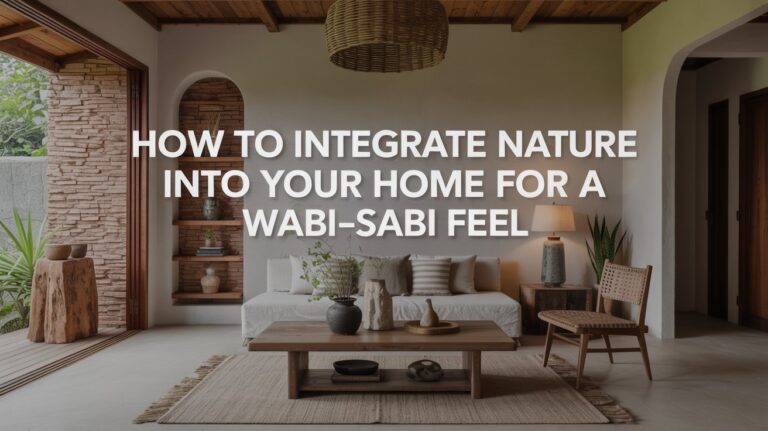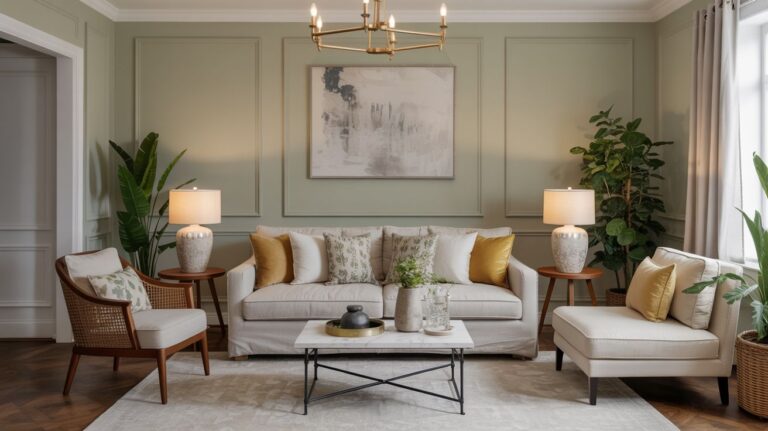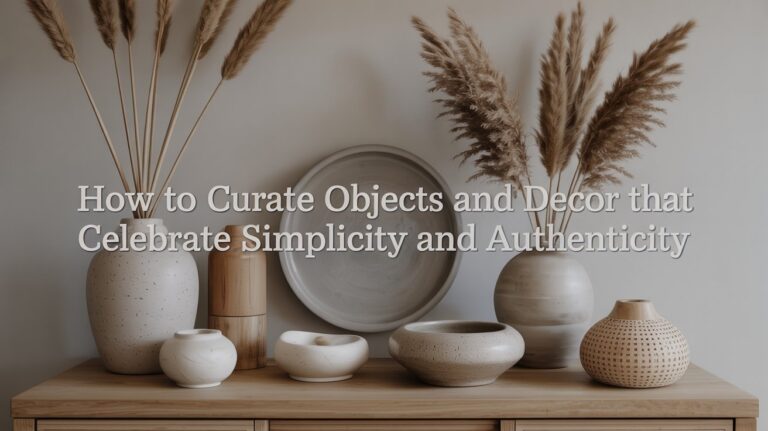How to Incorporate Natural Materials Into Wabi Sabi Aesthetics
I have been, or can be if you click on a link and make a purchase, compensated via a cash payment, gift, or something else of value for writing this post. As an Amazon Associate, I earn from qualifying purchases. Please read my full Affiliate Disclosure for more information.
To weave natural materials into a wabi sabi space, start with wood and stone, letting honest seams and tool marks tell their stories. Embrace texture over polish: clay, linen, and plant fibers should invite touch, with irregular edges and soft, organic curves. Let surfaces age slowly, gathering patina from light, use, and weather. Use earth tones and quiet light to guide rhythm. Curate simply and sustainably, and you’ll create calm, imperfect elegance that invites you to stay and explore further.
Key Takeaways
- Embrace honest materials: use wood, stone, clay, linen, and plant fibers with visible grain, texture, and tool marks.
- Prioritize aging and patina: celebrate wear, subtle scratches, and time-worn edges as character.
- Favor organic shapes and irregularities: avoid slick precision; let nature-driven forms guide edges and silhouettes.
- Subdue color and light: rely on earth tones, natural dyes, and daylight to create calm, nuanced contrasts.
- Practice practical minimalism: curate for function and sustainability, with gentle edits to maintain a clutter-free, tranquil space.
Embracing Imperfection With Wood and Stone
Embracing imperfection with wood and stone says more about presence than polish. You enter spaces shaped by time, textures, and honest seams. You notice handmade craftsmanship in every toolmark, every joint that speaks of intention rather than perfection. organic forms emerge where grain and grainless surfaces meet, softly resisting sameness. You choose boards that tell a story, stones that carry weathered memory, then let them breathe with light and air. Simplicity concentrates meaning; noise dissolves, patience remains. In this quiet collaboration, your surroundings become honest companions—unrefined, sturdy, alive—with imperfection welcoming depth rather than distraction.

Choosing Texture and Tading: Clay, Linen, and Plant Fibers
Texture isn’t decoration here; it’s the core. You’ll feel texture in clay’s tactile warmth, linen’s quiet drape, and plant fibers’ subtle grain. Choose materials that invite touch, not glare, shaping a space that breathes. Natural dyeing can bring depth without overpowering form, preserving the material’s integrity and your eye’s rest. Favor organic shapes over slick precision; irregular edges and gentle curves reveal Wabi Sabi’s honesty. Introduce clay for grounding, linen for movement, and plant fibers for softness. Maintain restraint: contrast, not clash, governs balance. The result is a calm, honest texture ecosystem you can live with daily.
Aging Gracefully: Patina, Wear, and Subtle Change
Patina accrues in small, honest ways: a glaze of wear that doesn’t erase character but adds context. You observe surfaces aging gracefully, each mark a note in the material’s diary. Patina development happens slowly, shaped by use, climate, and care, revealing a history you can trust. Subtle aging isn’t about disguise; it’s honesty in texture, a readable story of time lived. You value restraint: scratches softened by patina, edges mellowed not erased. This fidelity to process keeps spaces calm, tactile, and real. Embrace the quiet change, letting surfaces tell their truth with quiet dignity.
Color, Light, and Quietness in Natural Spaces
Color breathes through natural spaces in quiet, deliberate ways: light shifts, shadows soften, and hues settle into the air like breath on skin. You notice how natural pigments mingle with daylight, creating subtle progressions rather than loud contrasts. Organic shapes echo in wood grain, stone texture, and plant forms, guiding your gaze with calm rhythm. You prefer restraint: the palette leans toward earth, moss, clay, and ash, inviting reflective stillness. Quietness becomes a design material, shaping mood more than hue. In this approach, clarity emerges through tactile awareness, where color serves as a gentle, supporting presence.
Practical Curation: Simplicity, Function, and Calm Living
Practical curation keeps things lean: simplicity guides every choice, function grounds every surface, and calm living becomes a deliberate habit. You shape your space by choosing purpose over trend, letting textures tell the story, and removing what distracts. In this approach, sustainable sourcing matters, aligning materials with ethics and durability. Minimalist design stays honest to need, not novelty, inviting quiet exchange between object and user.
- Prioritize quality over quantity
- Select naturally derived, durable materials
- Seek transparent, ethical sourcing
- Maintain intention with regular, gentle edits
Conclusion
In your space, make imperfection deliberate, not accidental. Let wood’s grain and stone’s weight ground you, aging with quiet confidence. Choose textures—clay, linen, plant fibers—that invite touch, then allow their patina to tell your story. Balance color and light to foster calm, uncluttered spaces. Curate with intention: fewer pieces, deeper meaning, honest function. You don’t chase trends; you honor nature, embrace change, and let simplicity become your most powerful texture. This is wabi sabi in practice.
